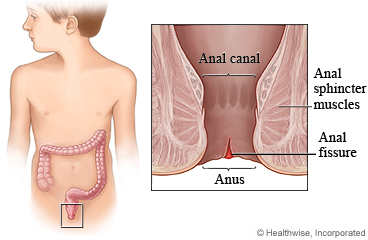
Fissure anal fistulas are extremely common problem for doctors to deal with
Most people with fissure anal fistulas get better on their own without medical intervention, but an experienced GP may want to rule-out other conditions that have similar symptoms, for example piles (hemorrhoids) or anal cancer. If left untreated, fissure anal fistulas can be very painful. Diagnosing fissure anal fistulas is straightforward in most cases, as they look like internal bleeding.
The first stage of diagnosis is to have a patient examined with a high definition G.P.S. device. This will show a clear outline of the anus from end to end. The other common indicator of a fistula is bleeding. When the bleeding is very dark or when the bleeding is blood in a very specific location (rather than just in the general area). Blood tests will also show whether there is any blood present.
A CT scan will show the extent of the bleeding in the anal cavity and help rule-out conditions which may cause bleeding, such as bowel problems. Another way to confirm a fissure anal fistula is to do an endoscopy. Endoscopy is a special type of surgical procedure, which uses a narrow telescope to allow a doctor to see inside the body.
A physical examination will also help to establish the cause of the bleeding and any underlying problems, so a doctor will be able to treat the bleeding accordingly. A simple x-ray will show if the bleeding is internal or external. This will tell a doctor whether surgery is required to stop the bleeding or whether there are other conditions that may be causing the bleeding.
A dye test can also show whether internal bleeding is caused by internal bleeding from external blood vessels or from the skin surrounding the anus. The dye is injected into the anal area and will show if the dye sticks to any of the skin or internal bleeding.
Other causes of bleeding include injury or trauma to the anal canal. Anal cancer is one such condition. In this case the bleeding is caused by blood-filled pockets in the lining of the anal canal. This can be caused by an infection, bowel blockage, or other problems.

Surgery to repair the fissure is usually done if there are no other causes for the bleeding and if the patient is suffering with persistent bleeding. A large amount of bleeding can be caused by a large hemorrhoid, or if the fissure is large. It can also be caused by a hernia prolapse, which is a condition where the intestine is pushed through the anus. If the anal wall has been damaged by infection, the bleeding can be more difficult to treat than in healthy patients.
Surgical treatments are not suitable for everyone, so if the bleeding seems severe, then it is a good idea to see your GP as an operation is normally the best way to stop the bleeding. If you think you may have an infection, then a treatment of antibiotics will stop any further bleeding and reduce the pain.
For those who have a large internal vein, a treatment of anesthetics may be recommended to numb the anus and reduce any pain associated with the bleeding. A small device called a speculum will be inserted into the anus and this can be used to drain the large vein. A drain pipe can also be used to prevent the large vein from leaking any waste material back into the rectum.
If you are not sure if surgery is the best option for you, then you should seek advice from a surgeon
If surgery is the only option for treating the bleeding then it is important to discuss the surgery with your doctor beforehand and find out what risks there are.
If your fissure bursts, then you will need surgery to repair the fissure or to remove the bleeding from the damaged tissue. If the fissure is caused by a bulging disc, then a surgery called an interdental abscess will be required. The surgeon will insert a metal pole into the fissure in order to repair the disc and prevent the bleeding from spreading.
In some cases of severe bleeding, the doctor will decide that surgery is the only option and will recommend you to have a procedure called a stoma, which is a surgery in which a small bag of cement is put into the hole to seal it up. There are two main types of stock, which can either be internal or external.